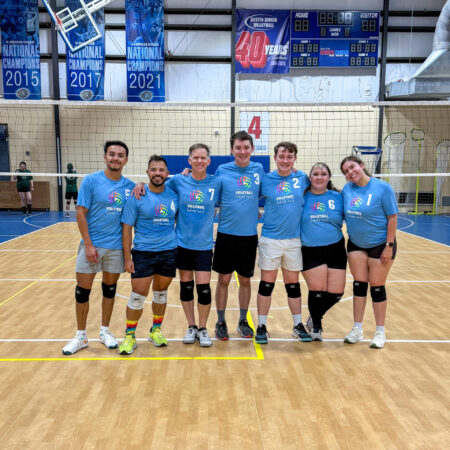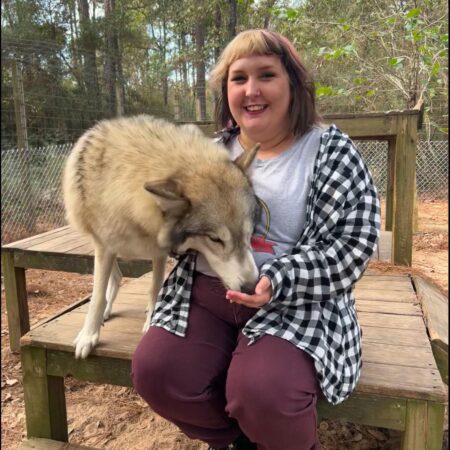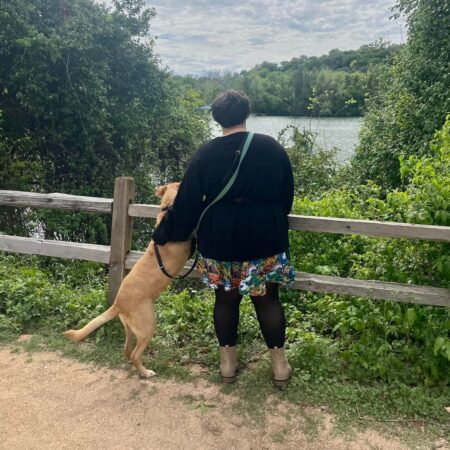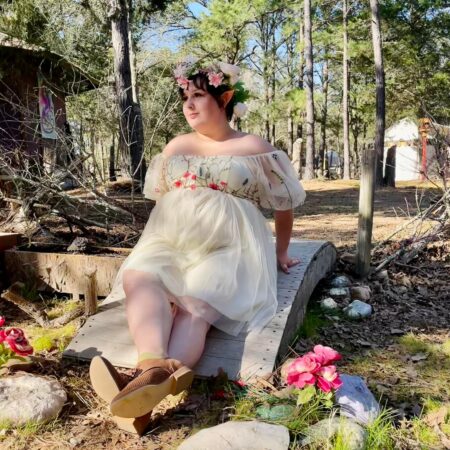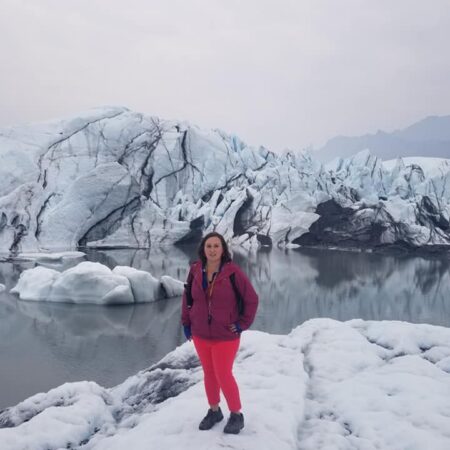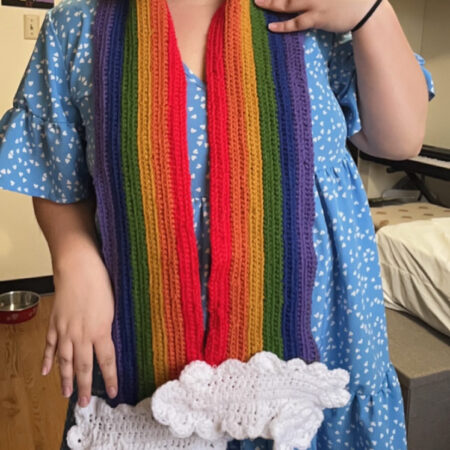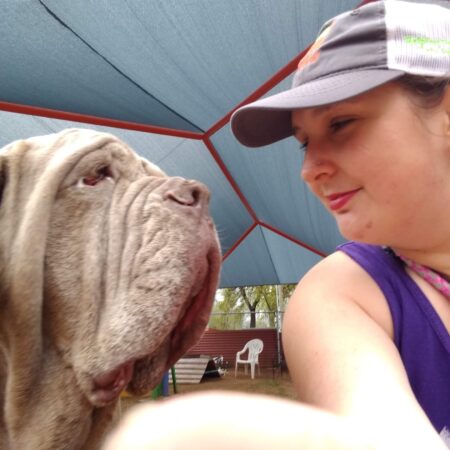My story, visualized
“Eighteen years ago, I was born out of wedlock in a small, poor town where many people, including my mother, didn’t graduate high school. Three years ago, my thirty-eight year-old aunt died suddenly, leaving us with the responsibility for her autistic son Billy amid overwhelming grief. Through the history of my mother and my cousin Billy, I can tell the story of my future.“
Ten years ago, I had my first chance to tell my story to the world as a first-generation college applicant. These words would launch me into a life of opportunity which I previously could not have conceived of. I went on to be not only a first-generation high school graduate, but the first from my distant rural county to graduate from Harvard University. Here, I tell the remainder of my story– how I became a scientist, an advocate, and an educator.
2025 _______________________________________________________the dissertation
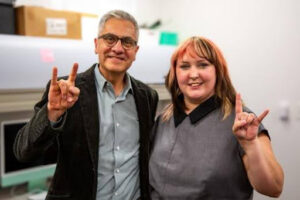
My dissertation focuses on disabled second language learners of American Sign Language (more specifically, with ADHD). It’s broken into three parts, which I like to think of as progressively “zooming in” on this niche population: first, from a broad educational perspective; second, at the level of general visual cognition; and finally, looking at the specific axis of visual second language learning.
Each of these “levels” is necessary for investigating this niche population. My hope is for my work to serve as a basis for helping real-world learners who fall under this umbrella.
part one: instructor, student interviews
In this study, we conducted Subject Matter Expert interviews with Deaf ASL instructors of college students. We asked these instructors about their experiences teaching and accommodating students with learning and related disabilities. This study sets up necessary background for my dissertation concerning what disabled students’ learning needs are in an ASL classroom. The instructors’ insight as experts of both teaching and signed language is invaluable, and it is clear they’re eager to establish more resources on this topic. This semester, I’ll be following up with interviews with college ASL students with disabilities; their first-hand accounts will be a critical part in establishing the themes and questions of this research topic going forward.
part two: visual attention and processing
The second study in my dissertation directly tests visual processing in the context of signed language. Focusing on ADHD– one of the most common disabilities reported in higher education– we ask: are there fundamental differences in how neurotypical and ADHD individuals process sign language signals?
I designed a novel experimental task (using PsychoPy/Python) for this study. It uses a dual-task model, asking participants to remember manual information (either signs or gestures) while also retaining distractor visual information. Additionally, we collected rote psychometric measures: non-verbal intelligence, short-term memory, etc. This study tells us how these cognitive domains relate to processing of signed visual signals, both within and across ADHD and neurotypical groups.
part three: associative language learning
The third study rounds out the dissertation by honing in on language learning specifically. Here, sign-naive participants engage in multiple language learning tasks in American Sign Language. They complete tasks learning lexical signs (e.g., “dog,” “gold) as well as tasks learning fingerspelled letters and words. (Thank you to Dr. David Martinez for providing the experiment scripts for the lexical learning task, which were also used as the basis for the fingerspelling tasks.)
As a follow-up to Part Two, this study specifically asks: if there are differences in the cognitive profiles of novice ADHD and neurotypical signers, does this actually lead to different learning outcomes? Analysis is nearly finalized for both experimental studies, and I am excited to share the results when available.
2019-2023 ___________________________________________________prior research
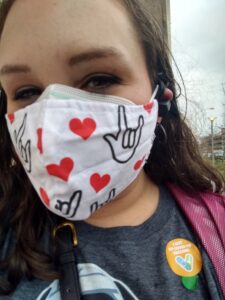
disability and l2 sign language learning: a first look
With my doctoral program beginning in 2019, the onset of the COVID-19 pandemic limited capacity for in-person human subjects research. I pivoted and worked with my supervisor to perform an independent, secondary analysis on an existing dataset that tested cognitive and linguistic processing in L2 (second language) sign learners. This dataset included indicators for learning and related disabilities, which I used as the basis of my group analyses. Our findings were published in Frontiers as my first “first-author” paper (Joyce et al., 2023).
We found that, overall, there was no disadvantage for the students who indicated a relevant disability on sign language tasks compared to “neurotypicals.” We did, though, find lowered performance overall for the disability group, as well as specific deficits for the “learning disability” group, on a non-linguistic version of the administered task. This suggests, at minimum, that there’s no specific detriment of signed language specifically for these groups; in fact, it seems language context may be beneficial. See our full discussion in the article.
perspective-taking and l2 sign language learning
Meanwhile, on the same dataset, I collaborated with my supervisor, Dr. Quinto-Pozos, to complete a general analysis of how L2 signers’ ability to complete perspective-taking tasks related to their sign language learning outcomes. Our findings were published in Language Learning (Quinto-Pozos et al., 2023), where we showed that perspective-taking ability related to some portions of sign language acquisition (e.g., narratives) while it had no significant relation to other components (e.g., phonological discrimination).
2019 ___________________________________________________________senior thesis
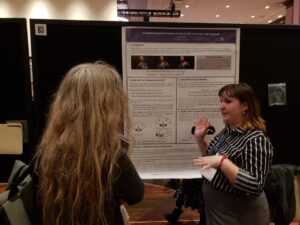
“A unified contrastive analysis of lateral shift”
My undergraduate honors thesis at Harvard was a formal semantic analysis of a construct in American Sign Language. I investigated the meaning of “lateral shift,” a device signers use in which their bodies shift from left to write, arguing that this was a cohesive semantic device used for different purposes, such as focus, coordination, and comparison. I submitted my work to the Linguistic Society of America conference and was able to present it as a poster, marking my first formal academic research presentation! I was beyond thrilled to share my work.
2015-2018 __________________________________________research assistantships
Pursuing an interdisciplinary track in “Mind, Brain, and Behavior,” I garnered a variety of research assistantship experiences across different fields as an undergraduate.
bangladesh project
(Laboratories of cognitive neuroscience)
My first formal research assistantship was at Boston Children’s Hospital in the Nelson Laboratory. The Bangladesh Project collected neurological, cognitive, and educational data on children of varied socioeconomic statuses in Bangaladesh. I was responsible for processing the collected EEG data using NetStation software. I was also responsible for data entry into the shared online system between project types. In this role, too, I learned to put EEG caps on infants, and served as a “sib-sitter,” caring for younger family members while their siblings participated in data collection.
JASPER PROJECT
(Laboratories of cognitive neuroscience)
My second RAship was with the JASPER (Joint Attention, Social Play, and Engagement Regulation) Project, also at Nelson Laboratory. JASPER is a play therapy targeted at children with developmental disabilities, and this project piloted the methods on girls with Rett syndrome. I assisted with the play sessions, learning JASPER principles to help the lead administrator conduct the sessions. I also monitored recording of the longitudinal play therapy sessions. I assisted with processing of the data and session notes, and even got to offer my input as a language “expert.”
nicaraguan sign language
(Laboratories for developmental studies)
At Snedeker Laboratory, I served as a research assistant on a project describing Nicaraguan Sign Language, under the direct supervision of Dr. Annemarie Kocab. I was responsible for using ELAN to generate a tagging system to differentiate signs based on word type (nominal, verbal, adjectival, etc.). I also assisted with running participants for additional experiments, which included learning to use the TOBII eye-tracking system with children.
2011-2015_______________________________________________________pre-college
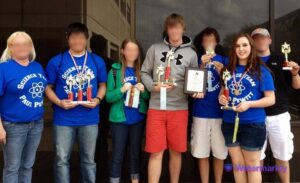
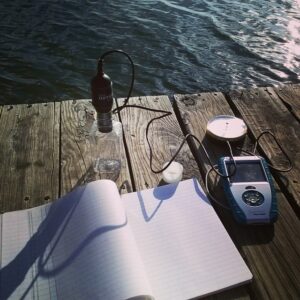
roots in science
My passion for science and research begins early, dating back to early high school.
Though I went to an under-resourced public school in the distant rural south, I was privileged in having an excellent mentor figure who stoked my interest in and talent for science. My high school teacher, Christy Williamson, not only taught all three of my school’s AP science courses, but headed and coached our University Interscholastic League (UIL) science team. These Texas-based academic competitions allow students to compete against each other in advanced studies of subject fields, ranging from science to creative writing (both of which I competed in).
Our school, under Mrs. Williamson’s coaching, excelled particularly in the domain of science and math. We placed as a team at the state level overall, and I placed individually in science and in biology. These competitions allowed me a unique opportunity to hone my passion for science into knowledge beyond the classroom, which I am forever grateful for.
I also pursued other extracurricular research experiences to the extent I was able, submitting a project to Google Science Fair, for example. In this project, I studied rates of mitosis in onion roots raised in water samples from lakes in my region. While this project did not place, it was an important outlet for my drive as an independent scientist.
2025___________________________________________________disability in higher ed
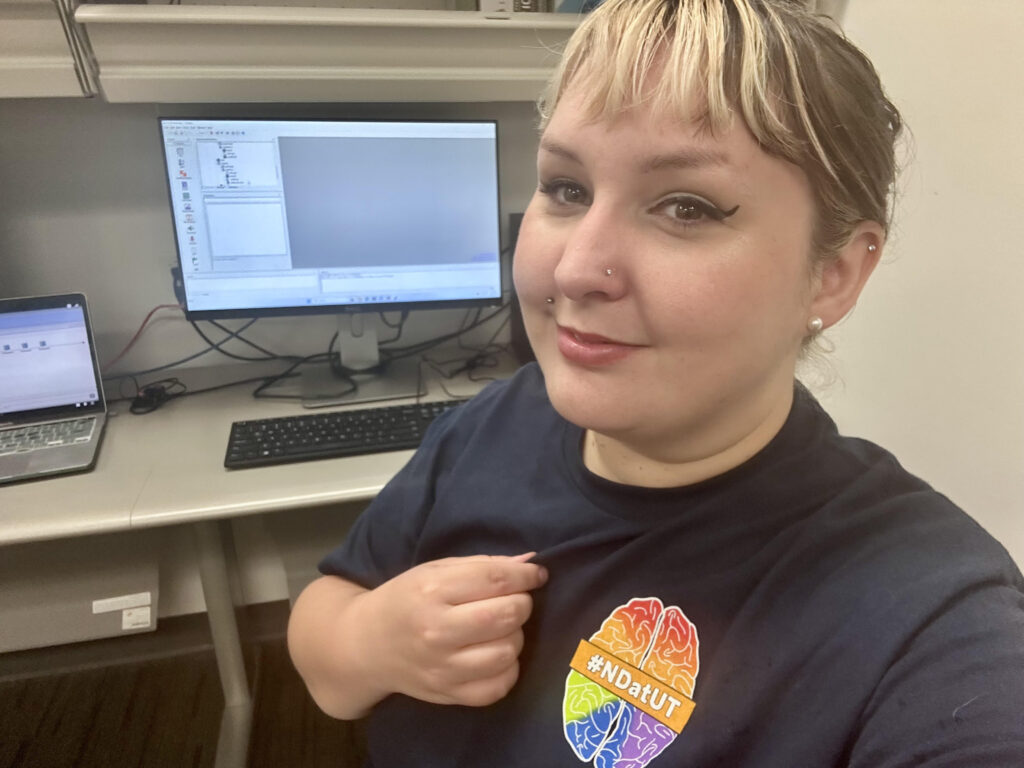
Disability has always been central to my life, and remains at the forefront of my work, both academic and professional. My research directly investigates adult disability experiences, and I ground my research in practice that centers disabled peoples’ input, using frameworks like Jon Henner’s and Octavian Robinson’s “Crip Linguistics.” My research is also informed by my own identity as a neurodivergent and disabled adult.
I am active in disability spaces, participating as a member of the Lime Network. In my professional role as an Apartments Resident Assistant, I have brought neurodivergent-oriented programming such as information sessions with Longhorn TIES (a support network for neurodivergent students at UT) to our community. I am currently studying to obtain certification through the International Association of Accessibility Professionals as a Certified Professional in Accessible Core Competencies.
2019_____________________________________________________service internship
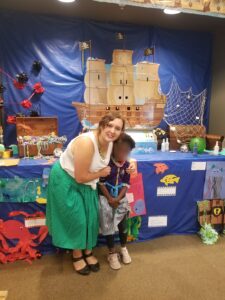
abused deaf women’s advocacy services
The summer between my undergraduate and doctoral programs, I had the privilege of interning with Abused Deaf Women’s Advocacy Services in Seattle. Funded by Harvard public service grants, I was able to provide a wide range of zero-cost support to this organization, from organizing community events for residents, to managing archiving of sensitive client information, to supervising resident children during community meals.
My primary role, though, was assisting the Summer Camp Coordinator (Nancy Edney) in running the Deaf and CODA (Child of Deaf Adult) summer camps. I planned educational and language-inclusive activities for multiple cohorts of children in the Deaf community. I also served as a counselor, supervising children on-site and on educational outings throughout the city. This was an incredible experience and a wonderful chance for me to connect with, learn from, and give back to the Deaf community.
2015-2019___________________________________disability community at harvard
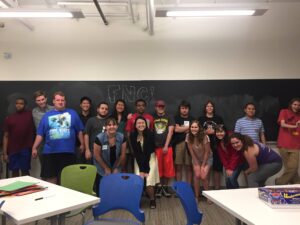
friday night club: a social space for autistic adolescents
I joined HURAA (Harvard Undergraduates Raising Autism Acceptance) my freshman year, and would go on to take major leadership roles in the organization, including as its co-president. Our primary service was organizing Friday Night Clubs, weekly social gatherings for autistic and/or intellectually disabled adolescents in the Boston area. As a director, I implemented special programming, including a “sensory-friendly” concert series in collaboration with the college wind ensemble I managed at the same time.
It felt like a privilege to use our resources as students at a well-endowed university to provide free, accessible social spaces to our community. As an autistic individual who grew up caring for an autistic family member in a rural, under-resourced region, I created the very same opportunities my family lacked access to.
deaf awareness club and asl’s return to campus
Due to my own hearing disability, I began taking weekend American Sign Language classes through the Deaf Awareness Club at Harvard. This served as a catalyst for me connecting further with not only the Deaf community, but the general disability community, and connecting more with my own identity as a disabled person.
I went on to take the formal ASL classes (historically offered at Harvard during my college tenure for the first time in decades), which was also formational in my research direction, pushing me towards linguistics as a specialty.
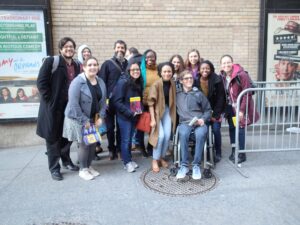
PRE-2015__________________________________________________an early advocate
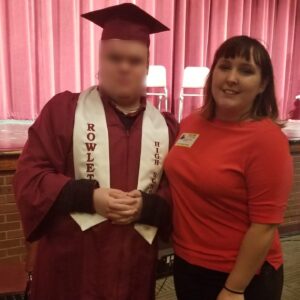
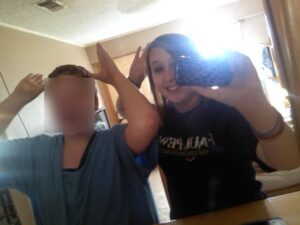
Disability has always been at the heart of my personal and familial experience. My Nana, who helped raise me while my single mother worked multiple jobs, suffered from a rare form of early-onset muscular dystrophy that runs in our family. I credit my love for reading and learning in large part to her– she held me and read to me every night, even as she struggled to leave her bed.
Growing up closely with my cousin– who is autistic and intellectually disabled– also inspired an early interest in disability advocacy. In junior high, I ran an “Autism Awareness Month” campaign, administering daily announcements on the intercom about autism, creating informational flyers to post in our hallways, and even creating a wiki with information about autism.
In high school, when my cousin was orphaned by the early death of his mother, he moved in with my family. I continued to pursue volunteership in disability spaces, serving as a Special Olympics student coach. At the same time, I grew even more intimate with the needs my cousin had and where our systems could better meet those needs.
As an autistic adult myself in disability advocacy spaces, I aim to prioritize the dignity and autonomy of all autistic people, while also recognizing the major gaps that exist for individuals like my cousin with complex support needs, particularly in under-resourced communities.
education: a chance to give back
As a first-generation student, dedicated teachers paved the way to my future. I strive to pay this experience forward to students of all backgrounds, both as an educator and as a mentor.
TEACHING experience
lead instructor (Spring 2023, fall 2024)
At UT Austin, doctoral students may serve as a course head (Assistant Instructor), a role in which you fully design and administer curriculum for an undergraduate course. I’ve served as an AI for “Introduction to the Study of Language” twice, and it is hands down one of my favorite professional roles I’ve taken on.
My teaching approach is rooted in evidence-based, inclusion-centered practice such as Universal Design for Learning, trauma-informed pedagogy, and culturally responsive teaching. Furthermore, as an interdisciplinarian at heart, I ensure my students are exposed to a range of applications and fields of linguistics. This includes hands-on “labs” such as my mini research-experiment I designed for my class (the materials for this lab can be found here), and even live documentation sessions with native speakers of underdocumented languages.
I emphasize collaborative scholarship, pulling in guest speakers where my expertise is less focused, and invite my students to bring in their own language expertise, as well. For example, I allow my students to submit an open-ended final project in any of their native languages. This puts the onus on me to meet and celebrate their language expertise, while driving engagement in the academic work we build.
My full teaching philosophy statement can be found here.
teaching assistantships (spring 2022-fall 2025)
I have also served as a teaching assistant during my tenure as a graduate student. I’ve TA’d for two different classes (each on multiple occasions), “Signed Languages and Signing Communities” and “Language and Identity.” Each of these courses are writing-focused, and I enjoy TAing them for the same reason I enjoy teaching introductory linguistics: students bring personal and insightful lived experience in relation to language to these classrooms, and I get to help them hone their thoughts into professional, academic writing.
harvard summer school academic program tutor (summer 2017)
In the summer of 2017, I served as a tutor for Harvard Summer School, covering high-demand classes such as Introduction to Life Sciences and Introduction to Neuroscience. The majority of students in these classes requiring tutoring were high school students; further, I had a 20-hour per week working limit, but was assigned over 40 students due to demand, including multiple “high-risk” students who were deemed at-risk of failing coursework. I strategized to meet high student need, balancing traditional one-on-one tutoring sessions with group “workshops” where I identified students with similar needs and created personalized curriculum for group tutoring sessions. This was extremely successful– each of my assigned “high-risk” students passed their coursework by the end of the summer semester.
peer academic tutor (2016-2019)
I also served as a part-time academic tutor during the regular academic term, tutoring peer undergraduate students in introductory calculus classes.
first-generation student service
first generation harvard alumni mentor (2020-2021)
As a Harvard undergraduate, I was offered multiple resources supporting my transition to college, including a first-generation mentor, a local host family, and financial resources for low-income students. As a graduate student, I used my extracurricular time to return this service to students like myself. I volunteered as a mentor for the First-Generation Harvard Alumni Union, being matched with one student per semester and meeting virtually with them to help them navigate their acclimation to campus life. I also assisted the FGHA in organizing the mentorship program, developing matchmaking materials and sending out communications to potential mentees and mentors.
first-generation student recruitment (2017-2018)
Harvard hosts a “Hometown Recruitment” program, in which Harvard undergraduates from underrepresented areas are employed as representatives to recruit potential college applicants from their hometown area. I served this initiative twice, first as a volunteer (a “hometown ambassador”) in winter of 2017, then as a paid representative with expanded funding (a “hometown recruiter”) in winter of 2018. In this role, I identified 15 public schools in my distant rural hometown area to perform recruitment trips to. On these trips, I delivered presentations about Harvard admissions, financial aid, and student life, critically informing students of the accessibility and affordability of Harvard education who otherwise (like myself!) would assume the cost to be out of reach.
This was an extremely touching and important experience for me. I got to leverage my connection to my community to convince students like myself of the attainability of prestigious higher education experiences. I connected with multiple students who I stayed in touch with as an informal mentor in the college applications process.
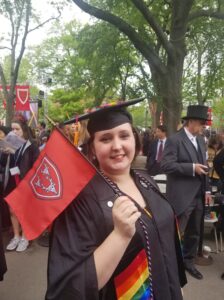
2025______________________________________________University apartments
apartments resident assistant (community advisor)
In addition to my academic pursuits, I have also maintained multiple positions in facilitating residential student life– as a first-generation student at a prestigious college far from my hometown, residential community was vital to my sense of belonging, and I strive to build that network of support for other students, as well.
Currently, I serve as an Apartments Resident Assistant (also known as “Community Advisor”) in off-campus housing serving both graduate and undergraduate students at UT Austin. I’m located specifically in our family housing division, servicing a community of hundreds of residents that is predominately international and also intergenerational.
Here, I’ve initiated new programs such as our “language table” series that celebrates the linguistic diversity of our community. I am also currently developing a peer mentorship program to match new residents with peers in their complexes who can serve as an additional resource in acclimating to life here in Austin.
I’m also responsible for a number of administrative and light maintenance duties to ensure the safety and security of residents.
2017-2018_______________________________________harvard summer school
resident advisor (high school division)
Twice, I served as a “proctor” (essentially, a resident advisor) for Harvard Summer School students (specifically, high schoolers). I served not only as an axis for community events and community building, but a first-line mentor and advisor for my student residents. It was extremely rewarding to guide highly driven high school students into their acclimation to college coursework and university culture, especially when, for many students, it was their first time spending a significant period away from home. I’m also a sucker for themes– my residential theme was the movie “Up!,” and I gave my residents “badges” throughout the term to celebrate their victories and participation in residential life.
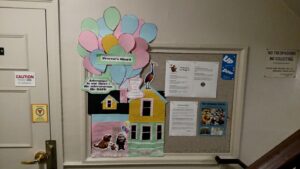
2016-2019_____________________________________________________dorm crew
As someone who’s worked to help support my family since I was a teenager, I’m not a stranger to the more labor-intensive roles. I contributed to Harvard’s residential community in this capacity as a member of Dorm Crew, a student-led organization that employs students to maintain the cleanliness of communal Harvard dorm facilities during the term (yes, that means cleaning our peers’ bathrooms!), and during the summer, runs an intensive five-week program cleaning the dorms following move-out.
This gave me a unique perspective and respect for the amount of labor that goes into making campus spaces a home for incoming students (and, not to mention, lots of fun finds from items that students left behind).
hobbies and interests
Outside of the office or classroom, I like to keep myself active, creative, and connected with my local community.
I’m an avid dog-lover (and fan of animals in general!). I met my own rescue dog, Cubby, while volunteering at Austin Pets Alive!
I also play recreational volleyball- I’m in my third season now. When I’m resting at home, I love a good horror book, board games with friends, or playing Nintendo.
I also do some amateur cosplay! I love the chance to get my hands on all kinds of crafts, including crochet.
